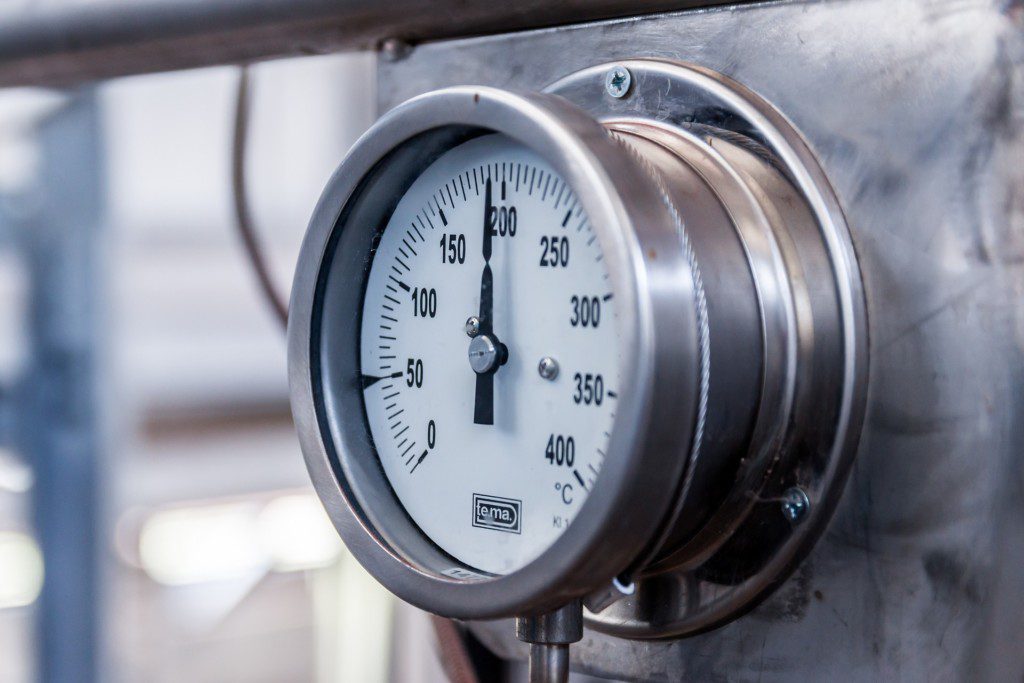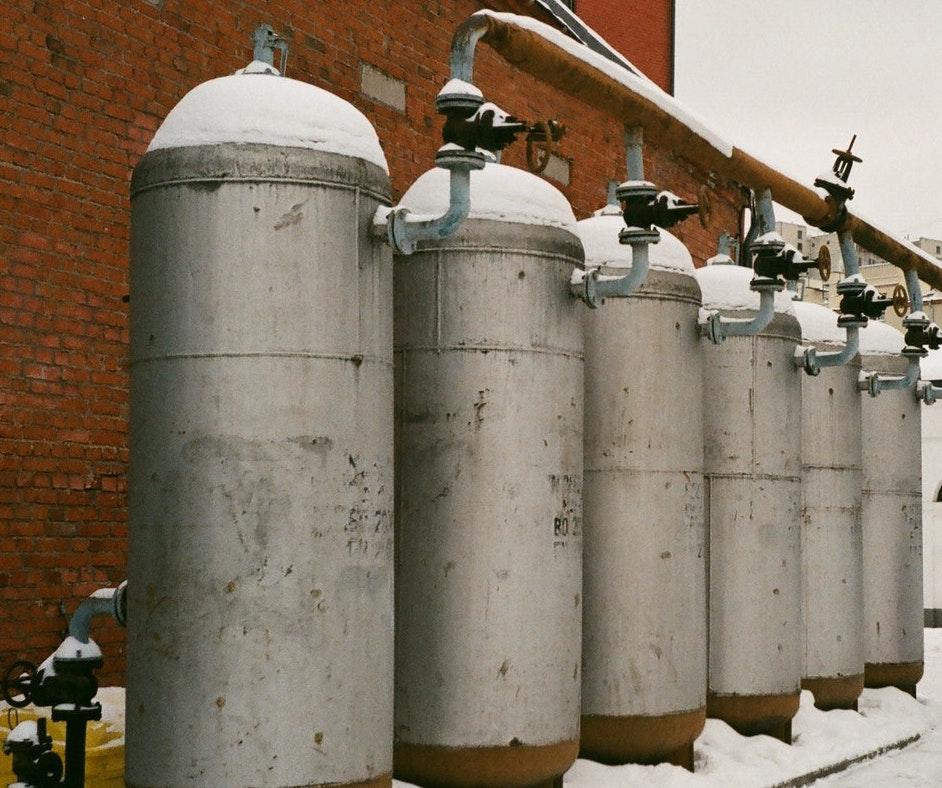11/27/2023 | Boiler Water Treatment | 9 MINUTE READ
Unlocking Boiler Longevity: A Comprehensive Guide to Boiler Blowdown

Boiler blowdown is a fundamental aspect of boiler maintenance, ensuring the efficient and safe operation of boilers. It plays a crucial role in regulating the concentration of dissolved solids (TDS) in boiler water, preventing scale formation, corrosion, and carryover. This comprehensive guide delves into the intricacies of boiler blowdown, shedding light on its purpose, mechanisms, influencing factors, procedures, disposal practices, and scheduling recommendations.
Unveiling the Purpose of Boiler Blowdown
Boiler blowdown is a crucial mechanism for maintaining optimal boiler health and performance. It involves the controlled removal of a portion of boiler water to prevent the accumulation of dissolved solids or impurities within the boiler. These impurities can originate from various sources, including feedwater, chemical treatment additives, and corrosion products.

Types of Boiler Blowdown: Continuous and Intermittent:
Boiler blowdown can be categorized into two primary types: continuous and intermittent. Continuous blowdown involves constantly discharging a small amount of boiler water, typically at 1-5% of the feedwater flow rate. This method maintains a relatively constant TDS level in the boiler water.
In contrast, intermittent blowdown involves periodically removing a larger volume of boiler water, typically at 4-12-hour intervals. This method is often employed when the boiler operates at higher TDS levels or when feedwater quality is poor.
- Delving into the Mechanism of Boiler Blowdown: The mechanism of boiler blowdown revolves around regulating the concentration of dissolved solids (TDS) in boiler water. As boiler water evaporates, the concentration of TDS increases. Excessive TDS levels can lead to a multitude of detrimental effects, including:
- Preventing Scale Formation and Its Detrimental Effects: Scale formation is a significant concern in boilers, as it can reduce heat transfer efficiency, increase fuel consumption, and potentially lead to boiler tube rupture. Boiler blowdown helps to prevent scale formation by maintaining TDS levels below the threshold at which scale formation occurs.
- Mitigating Corrosion and Its Impact on Boiler Integrity: Corrosion, the deterioration of metal surfaces due to chemical reactions, is another significant threat to boiler integrity. Dissolved solids in boiler water can accelerate corrosion, leading to leaks, premature failure of components, and overall degradation of the boiler. Boiler blowdown helps to mitigate corrosion by reducing the concentration of corrosive agents in the boiler water.
- Combating Carryover and Its Associated Risks: Carryover occurs when boiler water droplets are entrained in the steam produced by the boiler. This can lead to several problems, including:
- Fouling of downstream equipment, such as turbines and superheaters,
- Erosion of downstream equipment
- Contamination of the steam poses safety hazards
Boiler blowdown helps to combat carryover by maintaining TDS levels below the point at which carryover is likely to occur.
Factors Influencing Blowdown Frequency and Rate
Upon removing the desired volume of water, it is crucial to meticulously close the blowdown valves to terminate the controlled release of water. This decisive action ensures that the boiler water level remains within the specified limits, preventing any deviations that could compromise boiler operation.
Proper disposal of blowdown water is of paramount importance to safeguard the environment from potential contamination. Releasing blowdown water directly into waterways or onto the ground poses a significant risk of introducing harmful pollutants into the ecosystem. These pollutants can include elevated levels of dissolved solids, heavy metals, and chemical treatment additives, all of which can disrupt the delicate balance of aquatic and terrestrial ecosystems. Therefore, it is imperative to adhere to environmental regulations and guidelines for the disposal of blowdown water.
To mitigate the environmental risks associated with the indiscriminate discharge of blowdown water, proper disposal methods must be rigorously implemented. These methods should prioritize the protection of the environment while also conserving valuable water resources. In lieu of direct disposal, treatment options for blowdown water should be considered to reduce its TDS concentration and potentially allow for reuse. Chemical precipitation, filtration, and evaporation processes can effectively remove impurities from blowdown water, rendering it suitable for applications such as irrigation, industrial processes, or even boiler feedwater. By employing these treatment methods, environmental contamination is minimized, and valuable water resources are conserved, fostering a more sustainable approach to boiler maintenance.

Concluding the Blowdown Process
Upon removing the desired amount of water, it is essential to carefully close the blowdown valves to cease the water flow. This step ensures that the controlled release of water is halted and the boiler water level remains within the prescribed limits.
Proper disposal of blowdown water is paramount to safeguard the environment from potential contamination. Releasing blowdown water directly into waterways or onto the ground poses a significant risk of introducing harmful pollutants into the ecosystem. Therefore, it is imperative to adhere to environmental regulations and guidelines for the disposal of blowdown water.
The indiscriminate discharge of blowdown water can have detrimental effects on the environment. It can introduce elevated levels of dissolved solids, heavy metals, and chemical treatment additives into waterways and soil, disrupting the delicate balance of aquatic and terrestrial ecosystems. To mitigate these environmental risks, proper disposal methods must be implemented.
In lieu of direct disposal, treatment options for blowdown water can be considered to reduce its TDS concentration and potentially allow for reuse. Chemical precipitation, filtration, and evaporation processes can effectively remove impurities from blowdown water, rendering it suitable for applications such as irrigation, industrial processes, or even boiler feedwater. By employing these treatment methods, not only is environmental contamination minimized, but valuable water resources are also conserved.
Boiler Blowdown Control with SS Conductivity Sensor: Ensuring Precise Impurity Removal
Boiler blowdown plays a crucial role in maintaining optimal boiler performance and longevity by preventing the accumulation of dissolved solids (TDS) that can lead to scale formation, corrosion, and carryover. Traditional methods of blowdown control, such as manual control or timer-based control, often lack the precision and responsiveness needed to effectively manage TDS levels.
The introduction of 316L stainless steel (SS) conductivity sensors has revolutionized boiler blowdown control, offering a more accurate and reliable approach to regulating TDS levels. These sensors directly measure the electrical conductivity of boiler water, which is an indirect measure of TDS concentration. By continuously monitoring conductivity, SS sensors provide real-time data that can be used to precisely control blowdown valves and maintain optimal TDS levels.
Benefits of SS Conductivity Sensor for Boiler Blowdown Control
- Enhanced Precision: SS conductivity sensors offer superior precision compared to traditional methods, ensuring that blowdown occurs only when necessary, minimizing water and energy consumption.
- Real-time Monitoring: Continuous conductivity monitoring provides real-time insights into TDS levels, allowing for immediate adjustments to blowdown if necessary. This proactive approach prevents TDS buildup from reaching critical levels.
- Reduced Corrosion Risk: By maintaining optimal TDS levels, SS conductivity sensors help to reduce the risk of corrosion, which can lead to premature boiler failure and costly repairs.
- Improved Heat Transfer Efficiency: By preventing scale formation, SS conductivity sensors contribute to improved heat transfer efficiency, leading to reduced fuel consumption and energy savings.
- Minimized Environmental Impact: By optimizing blowdown, SS conductivity sensors help to minimize the environmental impact of boiler operation by reducing water discharge and conserving valuable resources.
Implementation of SS Conductivity Sensor for Boiler Blowdown Control
Integrating SS conductivity sensors into boiler blowdown control systems typically involves the following steps:
- Sensor Installation: The SS conductivity sensor is installed in a representative location within the boiler water system, ensuring accurate measurement of TDS concentration.
- Sensor Calibration: The sensor is calibrated to ensure the accuracy of the conductivity readings. This calibration involves comparing the sensor readings to known TDS concentrations.
- Controller Programming: The blowdown controller is programmed to utilize the conductivity sensor readings to regulate the blowdown valves. The controller logic should be designed to maintain TDS levels within acceptable limits while minimizing blowdown frequency.
- System Monitoring: The system is continuously monitored to ensure that the sensor readings and blowdown control are functioning as intended. Regular maintenance and calibration are essential to maintain system accuracy and reliability.
Establishing a Regular Blowdown Schedule
Regular boiler blowdown is an indispensable aspect of boiler maintenance, ensuring the efficient and safe operation of boilers. It involves the controlled removal of a portion of boiler water to prevent the accumulation of dissolved solids (TDS) and impurities that can lead to scale formation, corrosion, and carryover. The frequency of blowdown varies depending on the boiler type, feedwater quality, and operating conditions. Here’s a breakdown of recommended blowdown frequencies for different boiler types:
- Low-pressure boilers: Schedule blowdown once or twice a week for low-pressure boilers, as they can typically tolerate slightly higher TDS levels.
- Medium-pressure boilers: For medium-pressure boilers, perform blowdown once a day or every other day to maintain TDS levels within acceptable limits.
- High-pressure boilers: Due to their sensitivity to TDS buildup, high-pressure boilers require more frequent blowdown. Implement continuous blowdown or intermittent blowdown every 4-12 hours for high-pressure boilers.

Tailoring Blowdown Frequency to Specific Boiler Needs
It is crucial to adapt the blowdown frequency to the specific boiler and its operating conditions. For instance, boilers with higher TDS levels or operating at higher pressures may require more frequent blowdown to maintain acceptable TDS levels. Regular monitoring of TDS levels and boiler performance can help determine the optimal blowdown frequency for each boiler.
By implementing a regular and tailored blowdown schedule, boiler operators can effectively manage TDS levels, prevent scale formation, corrosion, and carryover, ultimately extending the lifespan of the boiler and optimizing its performance.
Adapting Blowdown Frequency Based on Specific Boiler Requirements
While general blowdown frequency recommendations provide a starting point, it is essential to adapt the blowdown schedule to the specific boiler and its operating conditions. This dynamic approach ensures that each boiler receives the optimal level of blowdown to maintain optimal performance and longevity. Several factors influence the ideal blowdown frequency for a particular boiler:
- Boiler Type: Different boiler types have varying TDS limits. For instance, low-pressure boilers generally have higher TDS limits compared to high-pressure boilers, which require more frequent blowdown to manage TDS levels effectively.
- Feedwater Quality: Feedwater with higher TDS concentrations necessitate more frequent blowdown to maintain TDS levels within acceptable limits. The quality of the feedwater directly impacts the rate at which impurities accumulate in the boiler, necessitating adjustments to the blowdown schedule.
- Operating Conditions: Boilers operating at higher pressures or with higher concentrations of dissolved solids require more frequent blowdown to prevent the formation of scale or the occurrence of carryover. The operating conditions of the boiler directly influence the severity and rate of TDS buildup, dictating the frequency of blowdown.
Conclusion
Boiler blowdown is an integral aspect of boiler maintenance, ensuring the efficient and safe operation of boilers. By understanding its purpose, mechanisms, influencing factors, procedures, disposal practices, and scheduling recommendations, boiler operators can effectively manage TDS levels and prevent scale formation, corrosion, and carryover, ultimately extending the boiler’s lifespan and optimizing its performance.
Posted by Joshua Samp on November 27, 2023
Sensorex is a global leader in the design and manufacture of quality sensors for water quality and process applications. The company offers more than 2000 sensor packages for pH, ORP, conductivity, dissolved oxygen, free chlorine, chlorine dioxide, UV transmittance and other specialty measurements, as well as a full line of sensor accessories and transmitters. Its expert technical support engineers solve analytical sensor challenges with custom designs and off the shelf products.




